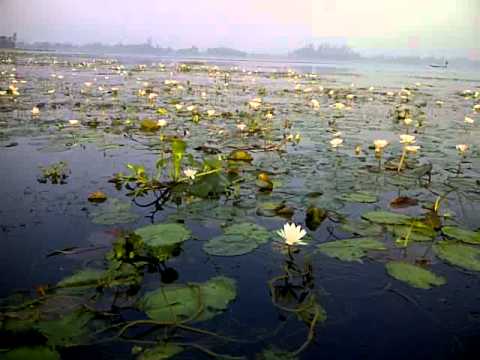Bakhira Tal
Bakhira Tal
(also called Badanch Tal or Moti Jhil).
This section has been extracted from THE IMPERIAL GAZETTEER OF INDIA , 1908. OXFORD, AT THE CLARENDON PRESS. |
Note: National, provincial and district boundaries have changed considerably since 1908. Typically, old states, ‘divisions’ and districts have been broken into smaller units, units, and many tahsils upgraded to districts.Many units have since been renamed. Therefore, this article is being posted mainly for its historical value.
A lake on the eastern border of BastI District, in the United Provinces. Buchanan described it as the finest piece of fresh water he had seen in India. It covers a space of about 5 miles by 2, but is merely a shallow depression filled with water, the depth of which rarely exceeds 4 or 5 feet. On the west and south the fringe of marsh is small ; but on the north a tract, which is regularly flooded in the rains, extends for 3 miles. To the east a low fen stretches for about 2 miles to the edge of the Rapti. The water in the lake is largely supplied by floods from this river, and would escape again but for an embankment along the eastern side. Fish are plentiful, and are caught in screens at the outlets of the dam or speared with a thin piece of bamboo tipped with iron. In the cold season the surface of the water is covered with wild- fowl. Boro or summer rice is largely planted in February or March round the edges of the lake.
SK Nagar’s official website adds
It is situated on the road from Mehndawal to Khalilabad in Lat. 26 55' N. and Long. 83 5' E., 16 km. north of the tahsil headquarters and about 18 km. from the district headquarters. Other roads lead to Gorakhpur in south-east and to Bansi and Rudhauli in north-east.
Bakhira is particularly known on account of the great lake , Moti Jhil (or Badhanchh Tal), which extends to a few kilometers to the east. The name Moti Jhil is said to have been bestowed upon it by Nawab Saadat Ali Khan, who frequently resorted here for hunting.
Bakhira is a market village, but the name is commonly applied to the bazar of Baghnagar, practically, an adjoining site , and the two are always treated as one, Bakhira was formerly the capital of a large domain granted by raja Sarbjit Singh of Bansi to an illegitimate son. In course of time the Babus of Bakhira acquired an independent position. In Buchanan's time their fort was strongly defended by a mud rampart, with a ditch and bamboo hedge. In the freedom struggle Babu Ram Pratap Singh made himself conspicuous by attacking and destroying the Bakhira police-station; and for this and other offences he was hanged and his lands forfeited to the government.
According to the census of 1971 it had a population of 294 persons and covered area of 70.01 ha. Market is held here twice a week, the main article of trade being agricultural produce, generally food-grains, brought by cultivators, the arrival of wheat in the busy season being in the range of 100 to 150 quintals per market day. Bakhira is also noted for the brass and bronze metal work. The whole sale dealers from Mirzapur, Varanasi and Moradabad visit this place and generally purchase new utensils against old scrap.
